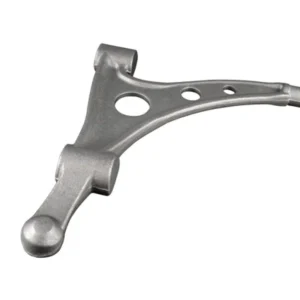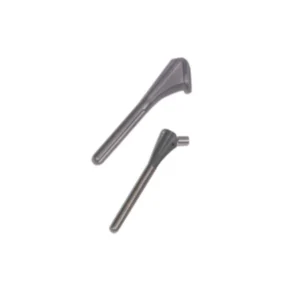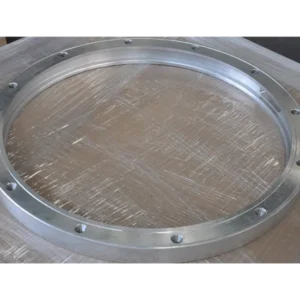Brass and Copper Forgings: A Detailed Exploration
Brass and copper forging is a specialized metalworking process that enhances the properties of these metals, making them suitable for a wide range of industrial applications. In this blog, we’ll delve into the intricacies of brass and copper forging, exploring its definition, materials, processes, applications, types, advantages, disadvantages, quality control measures, and why customers prefer Welleshaft for their copper and brass forging needs.
1. What is Brass and Copper Forging?
Forging is a manufacturing process where metal is shaped by applying compressive forces using a hammer or a press. Brass and copper forging involves the deformation of these metals at various temperatures to achieve desired shapes and properties. This process significantly improves the mechanical characteristics of brass and copper, such as strength, ductility, and resistance to corrosion.
1.1. Forging Materials: Brass and Copper
Brass: An alloy of copper and zinc, known for its excellent corrosion resistance, machinability, and attractive appearance. Common brass alloys used in forging include C260 (Cartridge Brass) and C360 (Free-Cutting Brass).
Copper: Known for its superior electrical and thermal conductivity, along with good corrosion resistance. Pure copper and various copper alloys (like Cu-Ni, Cu-Be) are commonly forged.
1.2. Forging Processes of Brass and Copper forging
- Material Preparation: Brass or copper billets are cut to the required size and shape.
- Heating: The billets are heated to make them malleable. The temperature varies based on the metal type and the specific forging process (hot, warm, or cold).
- Forging: The heated material is placed into a die and hammered or pressed to achieve the desired shape.
- Trimming: Excess material is trimmed off to finalize the shape.
- Cooling: The forged parts are cooled at a controlled rate to relieve internal stresses.
- Finishing: Additional machining, polishing, or surface treatments are applied as needed.
1.3. What are Brass and Copper Forging Parts Used For?
Forged brass and copper parts are used in a wide range of applications, including:
Electrical Components: Connectors, terminals, and electrical contacts.
Plumbing: Fittings, valves, and pipe components.
Aerospace: Bearings, bushings, and structural components.
Automotive: Radiator cores, heat exchangers, and decorative trims.
Industrial Machinery: Gears, fasteners, and couplings.
2. Types and Characterization of Forging
Hot Forging: Involves heating the metal above its recrystallization temperature. This process allows for significant deformation and improves ductility.
Cold Forging: Performed at or near room temperature, resulting in higher strength and precision due to work hardening.
Warm Forging: Conducted at temperatures between cold and hot forging, offering a balance between formability and strength.
2.1. Advantages of Brass Forging and Copper Forging
Improved Strength: Enhanced mechanical properties due to refined grain structure.
Excellent Conductivity: Particularly for copper, maintaining superior electrical and thermal conductivity.
Corrosion Resistance: Brass and copper offer natural resistance to corrosion, making them ideal for various environments.
Aesthetic Appeal: Brass, in particular, has a pleasing appearance, making it suitable for decorative applications.
2.2. Disadvantages of Brass Forging and Copper Forging
Initial Cost: Higher upfront cost for dies and equipment.
Complexity: Requires precise control of process parameters and skilled operators.
Material Wastage: Trimming and flash removal result in some material loss.
2.3. Quality Control in Brass Forging and Copper Forging
Ensuring the quality of forged parts involves several measures:
Material Inspection: Checking the chemical composition and mechanical properties of the raw material.
Temperature Control: Precise control and monitoring of heating to avoid defects.
Dimensional Accuracy: Measuring dimensions during and after forging to ensure conformity to specifications.
Non-Destructive Testing (NDT): Techniques such as ultrasonic testing and X-ray inspection to detect internal defects.
Surface Inspection: Visual and automated inspections for surface imperfections.
2.4. Types of Brass Forging and Copper Forging
Open-Die Forging: Suitable for large parts with simple shapes, offering flexibility and customization.
Closed-Die Forging: Ideal for high-volume production of smaller, complex parts with high precision.
Seamless Rolled Ring Forging: Produces high-strength rings with excellent structural integrity, often used in aerospace and industrial applications.
2.5. Properties of Forged Brass and Copper
Brass: High corrosion resistance, good machinability, moderate strength, and attractive appearance.
Copper: Superior electrical and thermal conductivity, good corrosion resistance, and high ductility.
2.6. Standard Forged Components
Brass: Valve bodies, pipe fittings, lock components, and musical instruments.
Copper: Electrical connectors, bus bars, heat exchanger tubes, and plumbing fittings.
3. Cold Forging vs. Hot Forging vs. Warm Forging of Brass and Copper – What’s the Difference?
Cold Forging: Enhances strength and precision due to work hardening but requires more force.
Hot Forging: Allows significant deformation and improves ductility by heating above recrystallization temperature.
Warm Forging: Offers a compromise between cold and hot forging, providing good formability and strength.
4. Why Customers Select Welleshaft for Copper and Brass Forgings
Expertise: Welleshaft has extensive experience and specialized knowledge in forging brass and copper components.
Quality Assurance: Rigorous quality control measures ensure high precision and reliability of forged parts.
Customization: Ability to produce custom shapes and sizes to meet specific customer requirements.
Advanced Technology: Utilizes state-of-the-art equipment and technology for efficient and precise forging processes.
Sustainability: Commitment to environmentally friendly practices and efficient material use.
Conclusion
Brass forging and copper forging is a critical process for producing high-quality, durable components used across various industries. Understanding the materials, processes, applications, advantages, and quality control measures involved in brass and copper forging helps manufacturers make informed decisions. Welleshaft stands out as a preferred partner for copper and brass forgings, offering unmatched expertise, quality, and customization to meet the diverse needs of their customers.













Reviews
There are no reviews yet.